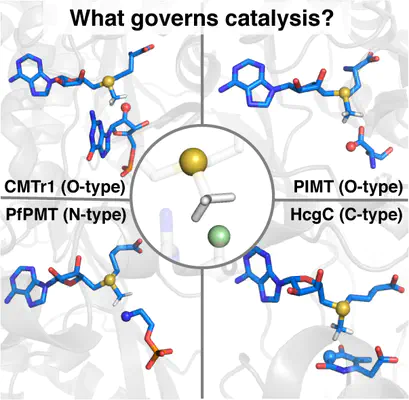Quantum Mechanical Description of Electrostatics Provides a Unified Picture of Catalytic Action Across Methyltransferases

Abstract
Methyl transferases (MTases) are a well-studied class of enzymes for which competing enzymatic enhancement mechanisms have been suggested, ranging from structural methyl group CH···X hydrogen bonds (HBs) to electrostatic- and charge-transfer-driven stabilization of the transition state (TS). We identified all Class I MTases for which reasonable resolution (<2.0 Å) crystal structures could be used to form catalytically competent ternary complexes for multiscale (i.e., quantum-mechanical/molecular-mechanical or QM/MM) simulation of the SN2 methyl transfer reaction coordinate. The four Class I MTases studied have both distinct functions (e.g., protein repair or biosynthesis) and substrate nucleophiles (i.e., C, N, or O). While CH···X HBs stabilize all reactant complexes, no universal TS stabilization role is found for these interactions in MTases. A consistent picture is instead obtained through analysis of charge transfer and electrostatics, wherein much of cofactor–substrate charge separation is maintained in the TS region, and electrostatic potential is correlated with substrate nucleophilicity (i.e., intrinsic reactivity).